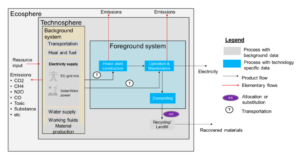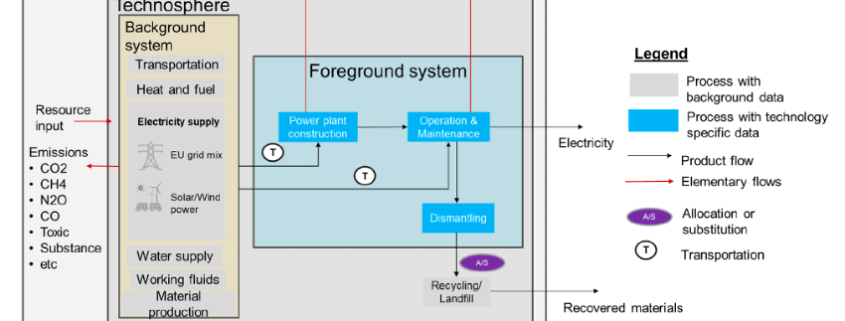New joint paper by Quantis, University of Seville, Abengoa, Baker-Hughes and Kelvion discusses the carbon footprint of the SCARABEUS concept

A large team from within the SCARABEUS consortium has been assessing the carbon footprint of Concentrated Solar Power plants using supercritical power cycles running on Carbon Dioxide mixtures, in comparison with state of the art power plants relying on steam turbines. This collective work has looked into the contributions of construction and operation to carbon footprint, with a special focus on the singularities introduced by the utilization of an innovative working fluid.
The work was presented at the ASME conference held in Rotterdam (The Netherlands), June 13-17, at a very well attended session where an interesting discussion followed the presentation by Dr. Francesco Crespi, from University of Seville. Life Cycle Environmental Assessment is an ongoing task in SCARABEUS and further results will be published in the coming minths.
The paper is available in Open Access on the publisher’s website (link). Check the abstract below:
The SCARABEUS project, funded by the European Commission, is currently investigating the potential gains brought about by the utilization of carbon dioxide mixtures in supercritical power cycles of Concentrated Solar Power plants, in lieu of the common Rankine cycles based on steam turbines or even pure carbon dioxide cycles. The analysis has already confirmed that it is possible to attain thermal efficiencies higher than 51% when ambient temperatures exceed 40°C, which is unheard of when conventional technology or standard CO2 technology is used. Additionally, this extraordinary performance is achieved with simpler cycle layouts, therefore with lower capital costs. The additives considered include organic and inorganic compounds which are added to the raw carbon dioxide in a variable proportion, depending on the composition of the additive and on ambient temperature. Regardless, it is important to assess whether or not there is an additional environmental advantage in terms of carbon dioxide and other potential hazards brought about by the new chemicals in the system. This is presented in this paper where the results obtained so far by the consortium for the carbon footprint from a Life Cycle perspective are discussed. Along with the assumptions and methodology, the results are compared for three reference plants: state-of-the-art CSP plant based on steam turbines, innovative CSP plant using pure supercritical CO2 technology, and the SCARABEUS concept using supercritical CO2 mixtures. The results are promising as they suggest that it is possible to reduce the carbon footprint of a 110 MWe CSP plant to be significantly less than 27kgCO2/MWh from the fifth assessment report of the Intergovernmental Panel on Climate Change (IPCC AR5)





